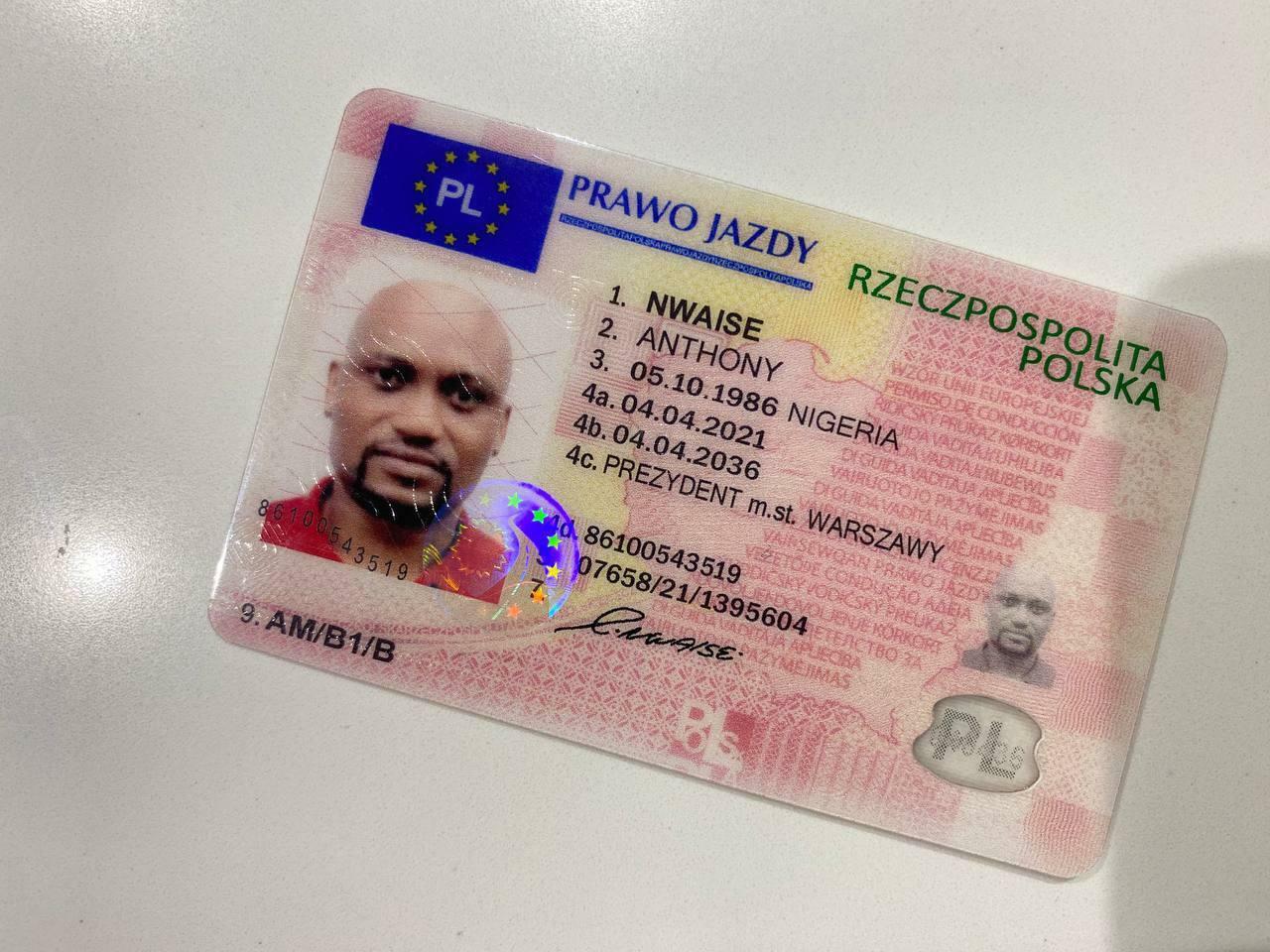
Karta Xpress Poland
Add a review FollowOverview
-
Founded Date April 10, 1986
-
Sectors Banking & Financial
-
Posted Jobs 0
-
Viewed 20
Company Description
The Main Issue With Driving License C+E And How To Fix It
Obtaining a Driving Licence C+E
The most complete HGV license is C+E. It permits you to drive a lorry with a semi-trailer or trailer of over 750 kg.
 The course for Category CE is a natural progression from the training that leads to Category C. It involves driving on roads that have different traffic density and on training tracks.
The course for Category CE is a natural progression from the training that leads to Category C. It involves driving on roads that have different traffic density and on training tracks.
Requirements
A driving license is a valid document that proves that the driver has met all legal requirements to drive. The requirements vary from one country to another but they all involve passing a driving test and not having any traffic violations on record. The tests are usually divided into theory and practice, although there are some exceptions to this rule. The first step to getting a license is to complete the driving course and pass the theory test. A driver must be physically fit to drive. Some countries require proof, Kup prawo jazdy kategorii b bez egzaminu – kartaxpresspoland.com, like a medical exam.
The next step is to get a Category C license, also known as a Car driver’s licence. This allows you drive passenger vehicles, trailers and trucks that weigh up to 7.5 tons. If you already have a Cat C license, you can upgrade to the Cat C + E, which allows you to drive articulated heavy-goods vehicles that weigh up to 44 tons.
You must be at minimum 21 years old in order to get a Category C license. This is the minimum requirement. However, you might be able to get one earlier if you have completed or are currently undergoing the training for the Driver Certificate of Professional Competence. You must also hold a full driving licence to be eligible for the category C+E license.
The C+E driving license is the most hgv-advanced category available. It blends the C and E categories, and is the most comprehensive hgv driving licence you can get. You must hold a Category C license to be eligible for a C+E license. You must also pass a driving test as well as medical examination.
In addition to passing the theory and practical driving exams, you must have medical checkups and eye exam. Medical examiners will test for diseases such as heart disease and diabetes, and also for other conditions. You must be in good mental health to be able to drive and have a history of substance abuse. If you have mental illness or mental illness, the DVLA will examine your application on a case-bycase basis.
Training
You can learn to drive trucks on the job. There are a variety of companies that provide full driver training classes. These companies will train students on how to drive rigid or articulated heavy goods vehicles that weigh up to 32 tonnes. The training consists of an instruction in the classroom and driving tests on the road. The driving test is usually about 1.5 hours and requires you to follow a predetermined route. The examiner will provide you with any directions or deviations.
After completing the training, a person will receive an learner’s license (LL) that is valid for six months. The LL permits people to drive on public roads so long they have a licenced driver accompanying them. Driving without a certified instructor is considered a crime.
Upon completion of the training after which the student will receive a certificate from an approved driving school. The certificate must be presented to an officer from the Vehicle Inspection Office (VIO) when applying for a driver’s license. The VIO will conduct a driving test to verify that the applicant is prepared to operate in a category C+E car.
The VIO will issue the permanent license once the driving test has been successfully completed. The license will include details about the driver, such as his name and father’s name and date of birth, address, vehicle types, emergency contact information as well as blood group information, fingerprint impression and photograph. The driver must undergo a medical exam before obtaining the license.
The license must be renewed every three years and is usually supplemented with the document known as a “vremennoe razreshenie”. This document serves as proof that the driver has passed an examination to make sure he is fit to drive. Drivers must also undergo first aid training in order to be ready for potential road accidents. Depending on where you live, a driver may have obtain an additional endorsement in order to drive in passenger vehicles. These endorsements are known as commercial drivers’ licenses (CDL). These endorsements are required by drivers who wish to transport hazardous materials.
Exams
To obtain your license, you must pass a written test and a driving test. The written test consists of 20 questions and you must correctly answer at least 14 of them. The questions are based off of the information contained in Chapters 4 through 11 of the NYS Driver’s Manual. To prepare for the test, read the manual and tests. It is crucial to take your time and do not rush through questions during the test.
The driving test consists of an exercise in basic vehicle control and slope-starting (for manual transmission vehicles) back-up, and an obstacle course. The examiner will also test your ability to react quickly to roadside emergency situations. The examiner will also verify that you are properly insured for your vehicle. During the driving exam you will not be able to take passengers other that your interpreter or sponsor. You are not allowed to use any recording device unless it is approved by the examiner.
The written and orally administered tests are conducted at DVS offices located in New York City and the surrounding counties of Westchester, Rockland and Nassau. Online scheduling is available or applicants can visit their local DVS office. Applicants can select their preferred time and date when they schedule their appointment. Candidates must present a valid driver’s license and proof of liability insurance to the DVS office. The oral and written tests are available in English, Albanian (in Albanian), French, Hebrew, Italian and Korean.
An extensive job analysis is performed prior to the creation of each exam. The job analysis includes observing incumbents, conducting surveys and interviewing, and analyzing current documentation. A group of Subject Matter Experts, or SME’s is established to examine the job analysis and develop the examination questions. They are well-trained in question writing techniques and are knowledgeable of the knowledge, skills and abilities required to do the job in a satisfactory way.
The written and oral examinations are designed to be as realistic as is possible. Examiners are able to deny your license in certain situations. You could be denied a license if during the test, you drove erratically or were involved in an accident. Or if you have violated traffic laws or rules and regulations. You’ll be required to take the test again and pay additional fees if you broke any traffic laws or rules.
Medical examination
In order to be able operate a truck within the EU, one must undergo an examination for medical reasons. A doctor will examine the driver’s eyesight and general health. A medical certificate allows a driver to be issued C+E driving license valid for five years. After that, the license can be renewed every year.
To pass the driving test you have to take two tests, one is theory based and the other practical. The theory test is comprised of 25 questions that you must answer in less than eight minutes. The test in practice consists of driving around a restricted area and demonstrating your capability to safely drive. Throughout the test you will be monitored and closely monitored by an examiner.
The test typically lasts up to 1.5 hours and consists of a written section and driving on the road. You must follow the instructions of the examiner and follow them. You will need to perform a series of maneuvers, such as changing lanes or overtaking, as well as parking. In addition, you need to demonstrate your ability to follow the road signs and signals. You will also have to follow a route that is given by the examiner.
Some commenters have questioned the term “not certified.” The final rule employs this wording to avoid any suggestion that a CDL holder is not medically certified. This phrase makes it clear that the driver’s driving privileges are not being suspended because of FMCSA’s adverse actions. The final rule stipulates that the State-designated licensure authority (SDLA), post the medical certification status of a CDL holder on their CDLIS driver record. This will help prevent false and fraudulent claims that the CDL holder is medically qualified, but in fact they are not. The SDLA will be required to provide the contact details of the ME who performed the medical examination on the driver’s record to further prevent fraud. This requirement will be in effect until FMCSA adopts new rules to address this issue. In the meantime, motor carriers may continue to maintain an original or a copy of the medical examiner’s certification in their driver qualification files to prove that the driver is medically qualified, so long as the carrier can demonstrate the date of receipt of the certificate from the ME.

